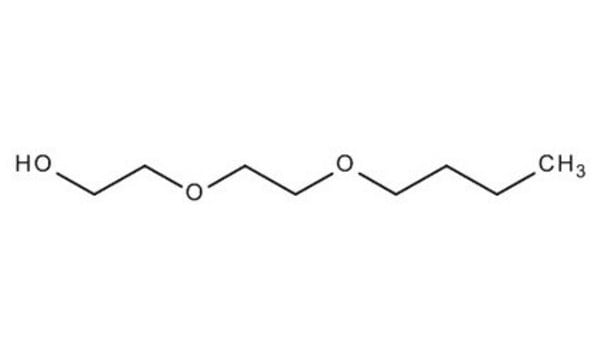90440
Triethylene glycol monobutyl ether
technical, ~70% (GC)
Synonym(s):
Butyltriglycol
About This Item
Recommended Products
grade
technical
assay
~70% (GC)
form
liquid
refractive index
n20/D 1.441
bp
265-350 °C (lit.)
density
0.990 g/mL at 20 °C (lit.)
SMILES string
OCCOCCOCCOCCCC
InChI
1S/C10H22O4/c1-2-3-5-12-7-9-14-10-8-13-6-4-11/h11H,2-10H2,1H3
InChI key
COBPKKZHLDDMTB-UHFFFAOYSA-N
Related Categories
Application
- In the synthesis of superparamagnetic iron oxide nanoparticles by thermal decomposition method.
- in the removal of CO2 due to its solubilize CO2.
It can also be used as a reactant in the preparation of polyether adducts of bis(1,1,1,5,5,5-hexafluoro-2,4-pentanedionato)barium.
signalword
Danger
hcodes
Hazard Classifications
Eye Dam. 1
Storage Class
10 - Combustible liquids
wgk_germany
WGK 1
flash_point_f
291.2 °F - closed cup
flash_point_c
144.0 °C - closed cup
ppe
Eyeshields, Gloves, type ABEK (EN14387) respirator filter
Certificates of Analysis (COA)
Search for Certificates of Analysis (COA) by entering the products Lot/Batch Number. Lot and Batch Numbers can be found on a product’s label following the words ‘Lot’ or ‘Batch’.
Already Own This Product?
Find documentation for the products that you have recently purchased in the Document Library.
Customers Also Viewed
Our team of scientists has experience in all areas of research including Life Science, Material Science, Chemical Synthesis, Chromatography, Analytical and many others.
Contact Technical Service













